Hoya Kerry: description, varieties, planting and care
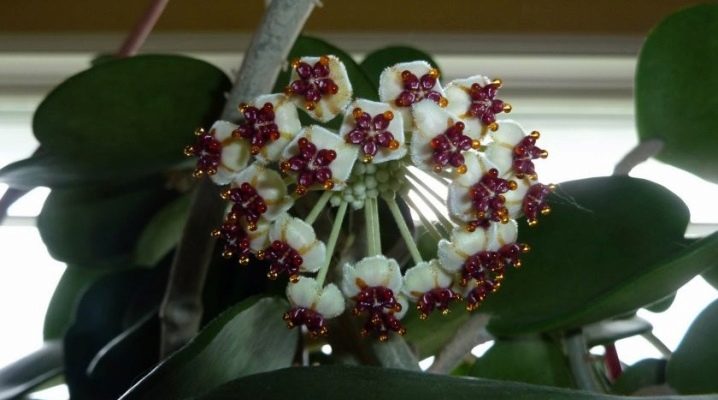
Hoya kerry has many unusual names, for example, "green heart" or "valentine". This is due to the original shape of its leaves - in the shape of a heart. A symbolic plant is often presented as a gift to loved ones, especially since, according to Chinese legends, it brings love and peace to the house. The beautiful appearance makes the tropical flower a favorite of flower growers.
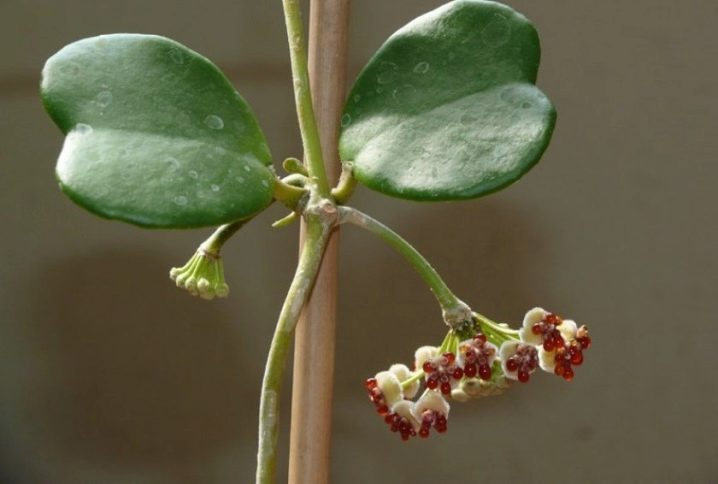
Description
Hoya kerry is a native of Polynesia and comes from the classic vine. Characteristic features of the plant:
- heart-shaped leaf;
- tall shoots requiring support;
- green foliage, however variegated subspecies are also found;
- leaves are dense, juicy, fleshy, not sinewy;
- the minimum sheet size is 5 cm, the maximum is 15 cm;
- flowering can be of various shades: red, white, pink and even yellow;
- the brighter the light, the richer the shade of the inflorescence;
- an umbrella-type inflorescence, up to 2 cm in size;
- flowering has a pronounced aroma;
- mature plants release nectar.
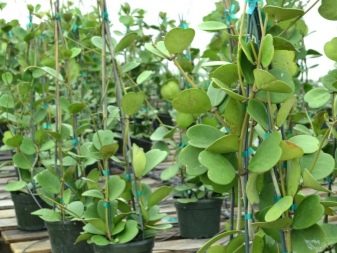

Varieties
There are a lot of varieties of both the hoya and the hoya kerry hybrids. Florists recommend paying attention to the following subspecies.
- Hoya kerrii Spotted Leaves. It is distinguished by original foliage, decorated with specks and dots of a lighter shade.
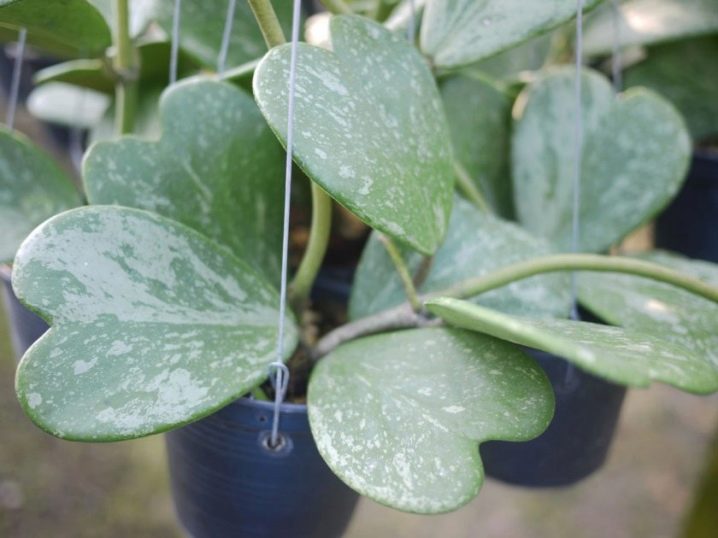
- Hoya kerrii Variegata ("Variegata") Is a very unusual representative of the species. It is also called variegated, since on the leaf, in the very middle, there are changes in the yellow tint.

- Hoya kerrii Albomarginata (Albomarginata). This flower is distinguished by a luxurious edging along the edge of the leaves, which is lighter in tone than the main color.
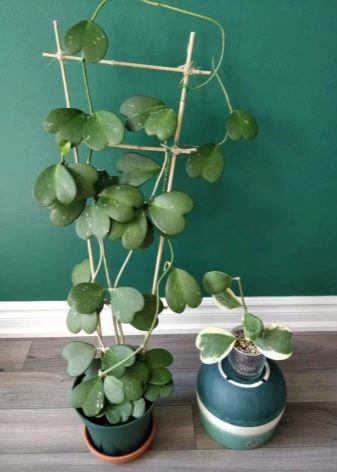

- Hoya kerrii Spot center. A characteristic feature of the subspecies is the elongated structure of the leaves and the accumulation of spots in the middle.

- Hoya kerrii Spot margin. The shape is usual for a representative of this species, it is distinguished by its light border and dark middle.
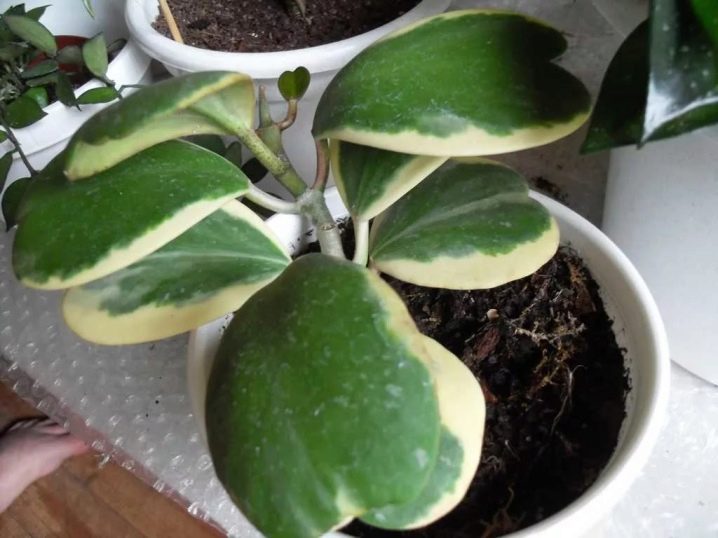
- Hoya kerrii "Splash" - the most colorful of all subspecies, specks and strokes are lighter than the main shade.
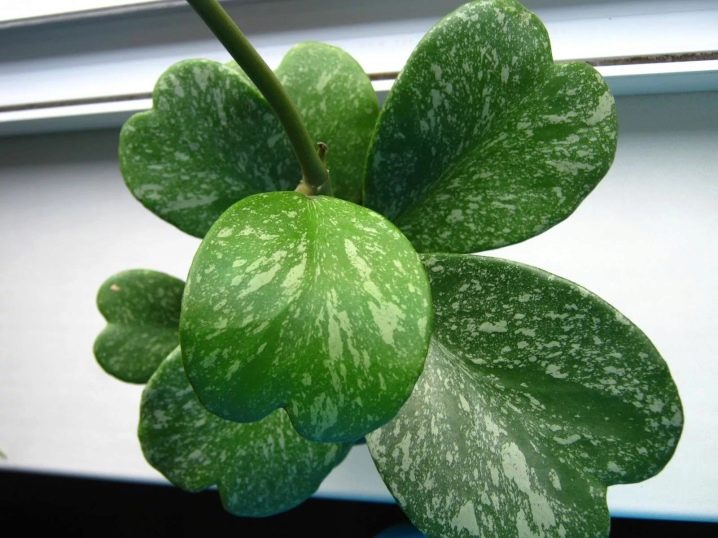
Landing
When purchasing this representative of the tropical flora, you should hurry up with a transplant, since it needs a nutritious and high-quality soil. The plant must be repotted annually until it is ripe, and every three years after it reaches maturity. The soil should be purchased from specialized stores or prepared by yourself. Ideal soil for hoya:
- loose;
- easy;
- fertile;
- moisture resistant;
- with good breathability.
If you decide to form the soil yourself, you need to combine equal parts: sand, humus, peat and sod land with the addition of pine bark and wood ash.
A prerequisite is a drainage layer at the bottom of the landing tank. It is created from any suitable material: broken brick, expanded clay, pebbles, rubble, foam. Failure to do this will allow moisture to accumulate and stagnate, causing the rhizome to rot.
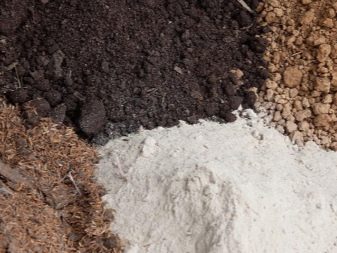

Care
At home, growing hoya does not cause serious difficulties, but it requires adherence to the nuances of care. Since the flower is of tropical origin, it is extremely sensitive to cold weather. With abundant moisture in the soil and air, the plant is able to withstand a fairly high level of temperatures. Optimal living conditions vary:
- from +17 to +22 in the spring-summer period;
- from +16 to +18 in autumn and winter.
We can say that the standard room temperature is great for hoya, but you need to regularly ventilate the room.
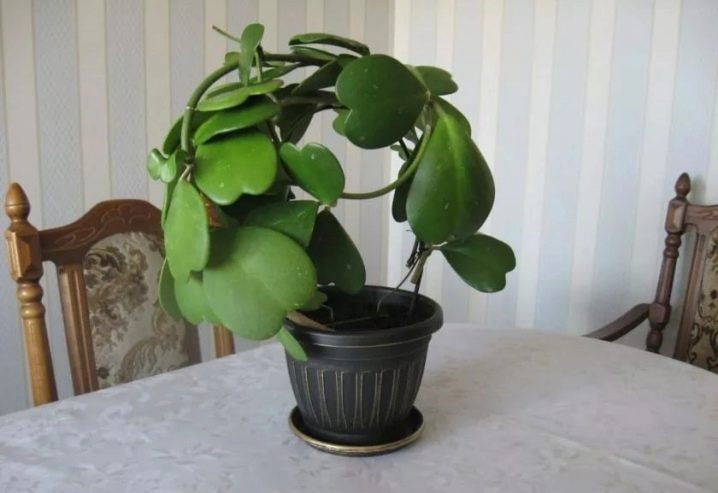
As for the location, it largely depends on the lighting conditions. This moment is thought out even before the purchase of a flower. Direct-spectrum sun rays harm the development of the plant, especially in the hot season. Therefore, in the summer, in no case place the indoor beauty on the window from the south. The best option is a window from the west and east. It is important that the hoye kerry has enough diffused light, then it will bloom profusely every year.
There is no need to increase the humidity level, average parameters are sufficient. At the same time, the plant loves water procedures, which should be carried out regularly: shower with warm water, spraying. Ideally, this should be done every 7 days. Do not spray the inflorescences or wipe off moisture from them if you do not want to spoil the decorative appearance of the flowering. Watering is done with the same frequency, if the leaves do not indicate a lack of moisture by their shriveled appearance. In winter and autumn, the soil is moistened every 14 days. The water should be separated, at room temperature.
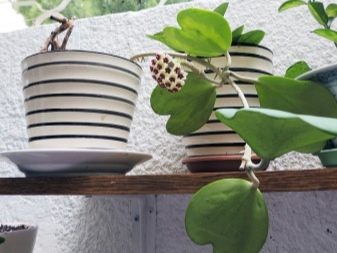
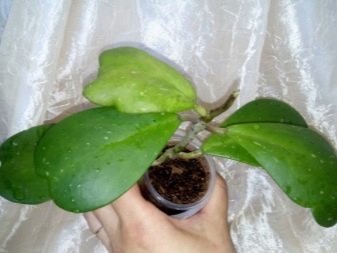
During active growth and flowering, hoya is fed with mineral preparations. Fertilizers are suitable for succulents and cacti, with potassium.
In order not to oversaturate the soil and flower, you should not feed it more than once a month.
As for pruning, you should be careful here and not subject a healthy flower to this procedure. Diseased leaves and shoots are removed for reproduction. You should not even separate the wilted inflorescences.
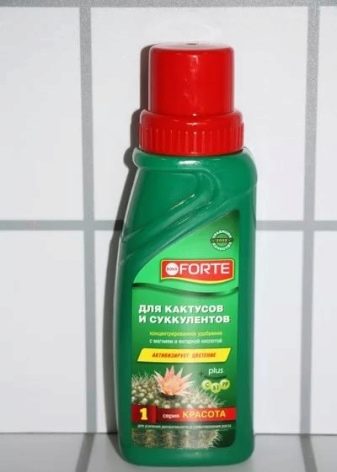

Reproduction
There are three main methods of flower propagation at home:
- cuttings;
- sheet;
- seeds.
Cuttings
Cutting is considered as simple as possible. Even a novice florist can easily master it. Following simple guidelines guarantees success:
- cut off the stalk with a clean sharp knife;
- small cuttings with at least one leaf reproduce more efficiently;
- it is necessary that knots be formed on the handle.
Rooting is done in two ways.
- In water... One knot of the cutting should be completely submerged in water. The container is covered with foil and placed in a warm place. After the formation of short roots, the plant is planted in a pot.
- Into a solid substrate... Short cuttings are planted in loose, moist soil, the container is placed in a warm place. Leave until roots are formed, after which they are transplanted into a pot.
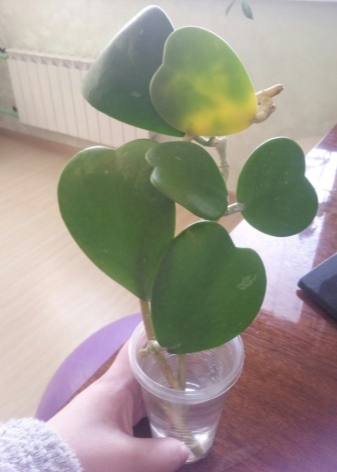

Sheet
Leaf propagation is recommended with the use of powder for root formation. Choose a leaf with any petiole rudiment. Planting angle - 45 degrees. The soil is as loose and light as possible, the container should be disinfected.
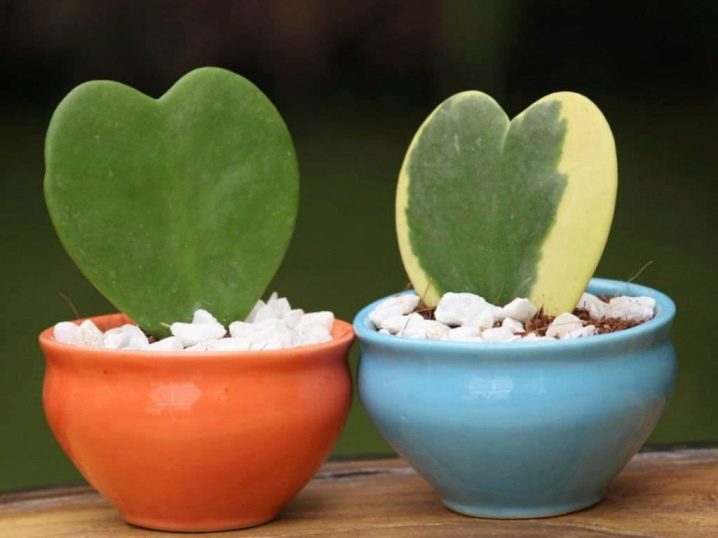
Seeds
Seed reproduction is the most difficult, since it is very problematic to buy ready-made seeds, and they rarely ripen. But if you decide on it, take a moisture-permeable soil, add burlap, felt pieces or any artificial fabric to it.
After the seeds have been collected, it is not recommended to store them; it is better to try planting in the first year. The soil should be well moistened, but not excessively.
Spray with fungicide periodically to prevent rotting.
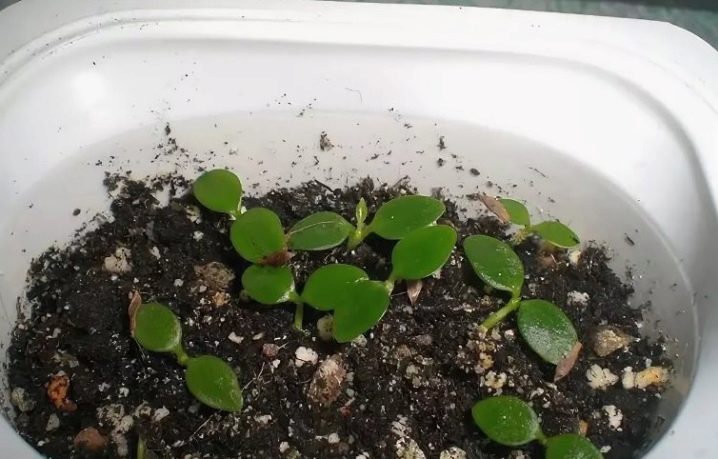
Flowering features
If you want to enjoy the luxurious tropical flowering of the hoya, you need to provide it with diffused but rather bright lighting. In this case, the plant will delight with a large number of inflorescences, aroma and brightness.
In order for the flowering to be as successful as possible, you should not change the location of the tropical guest. It is better to initially choose a place so that the flower is comfortable. Otherwise, with each change of location, it will adapt, which will certainly negatively affect flowering. Permutations are especially harmful during the period of active formation of inflorescences.
To keep the plant comfortable, set up the supports under the inflorescences so that the clusters of flowers are vertical. Once the flowering time has passed, remove the long shoots.
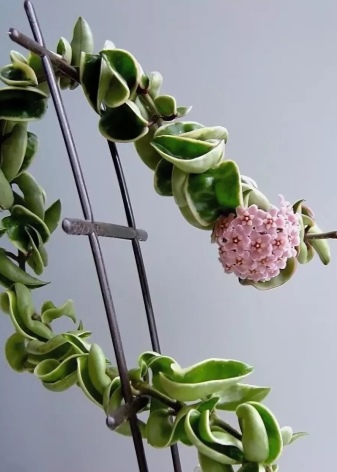
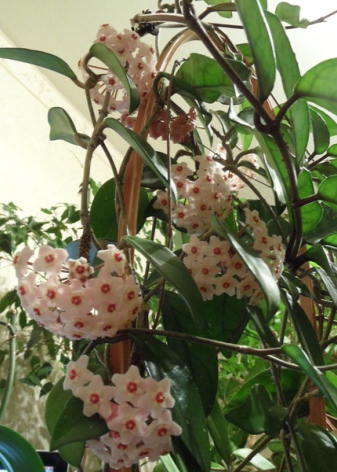
Diseases and pests
In general, this plant is considered strong and resistant to external pests and diseases, but a violation of care affects the health of the hoya. Most often, flower growers face:
- with gray rot;
- powdery mildew.
These problems are of fungal origin and are identified by their characteristic mealy-white patches.
You can get rid of powdery mildew with the help of special chemicals, but rot makes the flower die very quickly, so you need to take measures for urgent treatment.
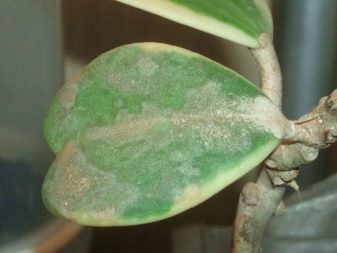

Signs that you need to pay attention to immediately:
- Seals and stains on leaves indicate a viral disease. It is necessary to place the plant in isolation and, if the diagnosis is confirmed, to destroy.
- Softening the trunk and shoots with the release of a foul-smelling liquid indicates a bacterial infection. The infected areas should be removed and sprayed with copper sulfate.
- Spots on foliage signals about too bright rays, excess of mineral fertilizers or low watering temperature.
- If the plant stopped in development, the color has lightened, which means that the hoye does not have enough nitrogen.
- Falling foliage - improper watering, excess or deficiency, dry air in the room.
- If the foliage turns red, you need to lower the air temperature and protect the flower from sun exposure.
- Dumping buds and flowering means that the plant has been moved to a different location. Also, the reason may be insufficient watering, lack of sunlight.
- Modest bloom means that the plant has little lighting.

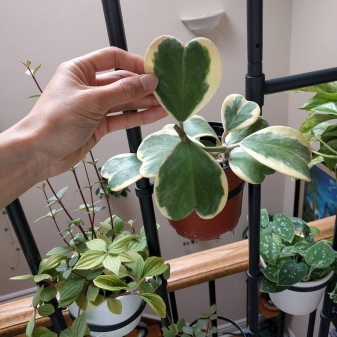
In addition to improper care and disease, the plant can be attacked by pests.
- Root nematode. In this case, growth slows down, the root system turns yellow, turns brown and dies off. It is necessary to treat the hoya with insecticides, rinse the roots with heated water, destroy too affected areas, then transplant.
- Mealybug, aphid, spider mite. It is difficult not to notice this, since the color of the plant fades, the leaves turn yellow and are discarded, the buds do not turn into open inflorescences. It is necessary to rinse the plant with warm water, rinsing off the insects, then spray with insecticides.
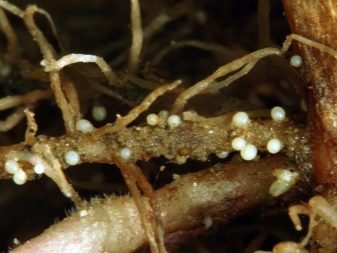
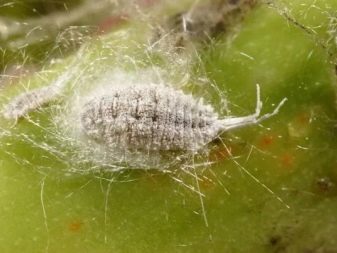
If the hoya kerry turned out to be susceptible to pest attacks, and you need special means to destroy them, pay attention to the following chemicals:
- "Karbofos";
- Fitoverm;
- Actellik;
- Phosphamide;
- Lindane;
- Mercaptophos.
For the cultivation of Hoya Kerry, see below.


























The comment was sent successfully.